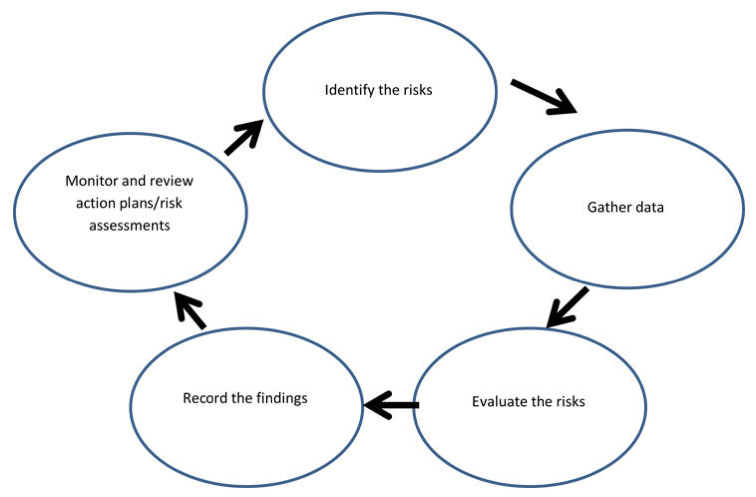Work-related stress, anxiety and depression is a major issue in many workplaces across the UK. Figures from the Health and Safety Executive (HSE) show that there were 600,000 new and long-standing cases of work-related stress, anxiety and depression in 2019 across the whole economy, accounting for 12.8 million lost working days.
The education sector is particularly badly affected, having rates of work-related stress around 50% higher than the whole economy.
Whereas appropriate, sustainable work pressure can be positive and beneficial, stress is always negative and must be tackled with stressors identified and removed.
The legislation is clear - work-related stress, anxiety and depression are workplace hazards and therefore must be risk assessed in exactly the same way as any other hazard, such as, for example, working at height. Employers who fail to carry out adequate risk assessments are in breach of health and safety legislation. This has been confirmed numerous times by the HSE.
In order to assist and support members experiencing work-related stress, anxiety and depression, members who have management responsibility for risk assessments, and activists seeking to ensure members are adequately protected, the NASUWT has produced this toolkit which brings together links to resources from the Health and Safety Executive and other resources that aim to tackle work-related stress, anxiety and depression. Included in the toolkit are links to model action plans, risk assessments and other guidance.
It should be emphasised that the resources linked to within this toolkit are published by government agencies as exemplars and should be respected as such by employers.
Although the HSE does not operate in Northern Ireland, Health and Safety Executive Northern Ireland (HSENI) has adopted the same approach as the HSE to tackling work-related stress and therefore all the materials are valid in Northern Ireland.
Obtaining Immediate Help
Members experiencing work-related stress, anxiety and depression should, if possible, discuss this with their line manager utilising where appropriate the resources in this toolkit. If this is not possible, members should contact the NASUWT for support and guidance.
Members experiencing stress, anxiety or depression - whether work related or not - can also contact the Education Support Partnership for free confidential support and counselling on 08000 562 561.
The Samaritans can also be contacted on 116 123.
Management conversations around mental health
The NASUWT recognises that it can be challenging for managers and school leaders to have conversations around mental health. The NASUWT has worked with the HSE to produce a Talking Toolkit which can be used to support these conversations.
Workplace Stress Risk Assessments
Work-related stress, anxiety and depression is a major issue for all schools, and should be treated in the same way to all other workplace hazards. It is often true, however, that school managements do not treat work-related stress, anxiety and depression in the same way as, for example, working at height. This may be the result of a range of factors, including the more nebulous nature of work-related stress or a lack of confidence in dealing with the issue.
Strategies to tackle work-related stress within a workplace should have two features:
- a stress/wellbeing policy which gives a broad outline of roles, responsibilities and expectations in relation to minimising work-related stress; and
- risk assessments and action plans to tackle specific issues within a workplace or for individual employees.
The HSE has produced an Example Stress Policy (pdf).
Risk assessments and action plans will underpin the effective operation of the stress policy. In order to develop these and maximise their impact, the HSE has designed a management standards approach which focusses on six elements:
- Demands
- Control
- Support
- Role
- Change
- Relationships
The HSE has produced further information on the Management Standards.
The HSE has published guidance on how to tackle work-related stress using the management standards. This provides a step-by step guide, through identifying risks, gathering data, evaluating risks, and developing and reviewing action plans and includes best practice suggestions. HSENI has also produced similar guidance for Northern Ireland.
In order to fully understand the nature of the pressures on any particular workplace, it is necessary to gather data from the workforce. The HSE has designed a Management Standards Indicator Tool (pdf). This takes the form of a survey, which all employees should complete.
The HSE has also produced an analysis tool (spreadsheet) which gives feedback on performance against each of the management standards, highlighting particular areas for development and setting medium and long-term goals to reach.
The HSE has also produced a user manual (pdf) which provides a walk-through of the process and suggestions to maximise the effectiveness of the survey.
The NASUWT has an online wellbeing at work tool which fulfils a similar function.
Once the data has been collected, action plans can be developed. These should always be agreed with the NASUWT to ensure they are fit-for-purpose and effective. The HSE has produced a template action plan (pdf) with an example provided.
Action plans and risk assessments should be regularly reviewed, especially if there is any material change to working practices. The full cycle should be repeated on an annual basis to ensure progress is being made in reducing work-related stress.
Individual Risk Assessments
It will sometimes be necessary to conduct an individual risk assessment for any individuals who are experiencing work-related stress. This is usually conducted when an employee has been absent from work due to work-related stress. It does not require a doctor’s diagnosis, however, and can be done at any time should an employee make a request.
The HSE’s materials are primarily concerned with addressing work-related stress at a workplace level rather than an individual level. However, Public Health Wales has a template individual risk assessment which can be downloaded from NHS Wales Human Resources Policies Supporting Documents (page 4).
Mental health policies
It is important that all workplaces have a mental health policy and ACAS has produced guidance around these policies.
The ACAS guidance also details what employers should be doing to support the mental health of their employees.
Valued Worker Scheme
The Valued Worker scheme is designed to highlight employers who treat their employees well, which would include working to improve the mental health of teachers.
To join the scheme, employers are asked to develop an action plan to address one of the six scheme principles. This could include action to improve mental health, such as training Mental Health First Aiders, or signing the Time to Change pledge.
You can find further details on our Valued Worker Scheme web page.
The NASUWT Health and Safety Representative
The NASUWT Health and Safety Representative has a key role in supporting and improving the mental health of the teachers in their school.
The Health and Safety Representative should regularly consult with members in the school to determine health and safety-related issues. They should then meet with management to discuss and agree how issues will be tackled, for example through an action plan.
All schools should have a Health and Safety Representative. If your school does not, then members should meet to elect one. Further information can be obtained by contacting us.
Further NASUWT advice and training
The NASUWT offers a large number of training courses, Consultation Conferences, and seminars, all of which are free for NASUWT members to attend. For example, the NASUWT regularly offers Mental Health First Aid Training.
You can find further details of what’s on offer on our Training and Development and Events web pages.
In addition to training, the NASUWT has published advice and guidance on an extensive range of health and safety topics.
Anonymous feedback
If you require a response from us, please DO NOT use this form. Please use our Contact Us page instead.
In our continued efforts to improve the website, we evaluate all the feedback you leave here because your insight is invaluable to us, but all your comments are processed anonymously and we are unable to respond to them directly.



